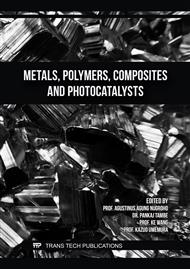p.3
p.9
p.15
p.23
p.29
p.41
p.57
p.71
Study on the Influence of Different Pressurization Times on the Mechanical Properties of Carbon Fiber Reinforced Epoxy Resin Composite Materials
Abstract:
The pressurization timing during the molding process has a significant impact on the quality and mechanical properties of the carbon fiber composite materials. High-strength medium modulus M40X carbon fiber reinforced epoxy resin composite laminates were prepared by a molding method at a curing temperature of 120 °C pressured at 0 min, 10 min, 20 min, and 30 min. The mechanical properties of the carbon fiber reinforced epoxy resin composites including interlayer shear properties, longitudinal tensile properties and compressive properties were studied. Section morphology of the composite material was characterized. The influence of different pressurization times on different mechanical properties of the composite material was analyzed and the reasons for the influence were explored. The research results indicate that the carbon fiber reinforced epoxy resin composite material pressured at 20 minutes has relatively good comprehensive mechanical properties. The resin can fully infiltrate the carbon fibers. The interface between the resin and carbon fibers is well bonded.
Info:
Periodical:
Pages:
9-14
Citation:
Online since:
May 2025
Authors:
Price:
Сopyright:
© 2025 Trans Tech Publications Ltd. All Rights Reserved
Share:
Citation:



